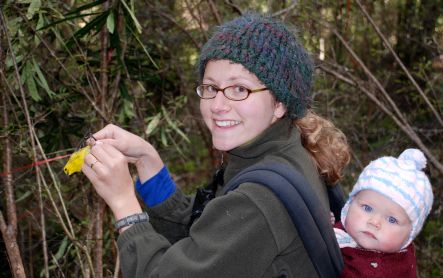Our Changing World for Thursday 19 March 2009
Antarctica's glacial history
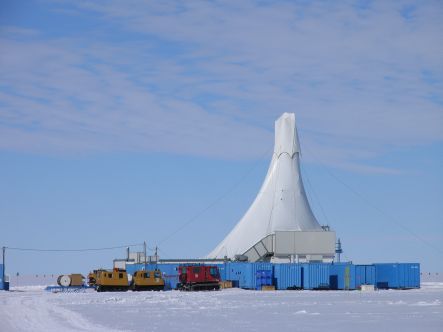
The Andrill drill rig, near New Zealand's Scott Base. Image: Veronika Meduna
Andrill stands for Antarctic Geological Drilling - a multi-national project that brings together scientists from Germany, Italy, New Zealand, the United Kingdom and the United States. The project aims to unearth Antarctica's geological and climatic history - in the hope that understanding the past will help predict how Antarctica will react to changes in climate in the future.
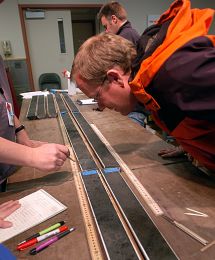 During two seasons on ice, teams of scientists and engineers drilled two holes, each more than a kilometer deep, and extracted sediment cores going back more than 20 million years. The analysis of the first 600m of the first drill hole, representing about five million years, was published in Nature this week, providing physical evidence of the dynamic nature of the West Antarctic Ice Sheet, the smaller of Antarctica's two main ice sheets. Andrill project co-leader Tim Naish (pictured on the right, inspecting the drill core) says the results show that the ice sheet waxed and waned, oscillating between a fully grounded state and complete collapse. The five-million-year period spans the middle Pliocene, a warmer period in Earth's history, which is often used as an analogue for what we might expect to see in the future.
During two seasons on ice, teams of scientists and engineers drilled two holes, each more than a kilometer deep, and extracted sediment cores going back more than 20 million years. The analysis of the first 600m of the first drill hole, representing about five million years, was published in Nature this week, providing physical evidence of the dynamic nature of the West Antarctic Ice Sheet, the smaller of Antarctica's two main ice sheets. Andrill project co-leader Tim Naish (pictured on the right, inspecting the drill core) says the results show that the ice sheet waxed and waned, oscillating between a fully grounded state and complete collapse. The five-million-year period spans the middle Pliocene, a warmer period in Earth's history, which is often used as an analogue for what we might expect to see in the future.
Jewelled Geckos
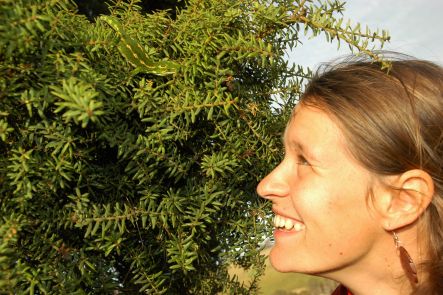
Rosi Müller with a jewelled gecko. Image: Rosi Müller
New Zealand is home to more than 80 species of skinks and geckos. One of the prettiest is the jewelled gecko, once common in Canterbury and Otago, although many of its populations have declined and it is now found mainly on Otago and Banks peninsulas. The jewelled gecko's bright patterning provides excellent disruptive camouflage when it is sun-basking on bushes. However, it also makes it attractive to poachers who capture wild animals to sell on the international wildlife black-market, which is estimated to be the world's third largest illegal trade behind drugs and firearms. The Wildlife Enforcement Group is responsible for detecting and preventing the illicit trade in endangered species under the Convention on International Trade in Endangered Species (CITES). It is based in Customs and includes staff from Customs, the Department of Conservation, and the Ministry of Agriculture and Forestry. To report any suspicious activity contact them on 09 359 6607 or weg@iconz.co.nz.
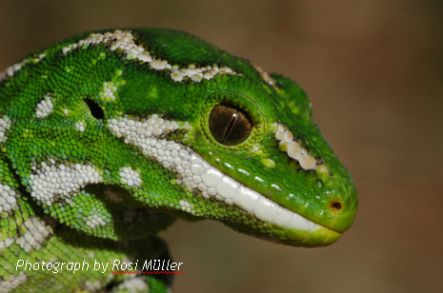
Language Evolution
Languages are a bit like genes - they are archives of history and provide evidence to help unravel the mysteries of our past. They evolve in remarkably similar ways to biological species. They split into new languages, mutate, and sometimes go extinct.
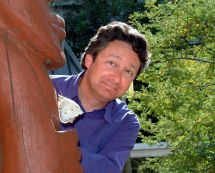 The Austronesian language family is one of the largest in the world, and one of the most widely dispersed, with around 1200 languages spoken in the area between Madagascar, Taiwan, Hawaii, Easter Island and New Zealand. By using the phylogenetic methods that have revolutionised evolutionary biology in the last twenty years, a team of University of Auckland researchers led by Russell Gray (pictured on the left) have set up the Austronesian language project to test hypotheses about the expansion of the Austronesian language family and the settlement of the Pacific. The results show that the origin of the entire Austronesian language family can be dated back to Taiwan around 5200 years ago, and moved through Island South-East Asia, along New Guinea and into Polynesia.
The Austronesian language family is one of the largest in the world, and one of the most widely dispersed, with around 1200 languages spoken in the area between Madagascar, Taiwan, Hawaii, Easter Island and New Zealand. By using the phylogenetic methods that have revolutionised evolutionary biology in the last twenty years, a team of University of Auckland researchers led by Russell Gray (pictured on the left) have set up the Austronesian language project to test hypotheses about the expansion of the Austronesian language family and the settlement of the Pacific. The results show that the origin of the entire Austronesian language family can be dated back to Taiwan around 5200 years ago, and moved through Island South-East Asia, along New Guinea and into Polynesia.
The team also shows that peopling of the Pacific proceeded through a series of expansion pulses and settlement pauses, which can be linked to the development of new technology - better canoes, farming, social techniques to deal with the inter-island distances in Polynesia.
Mohua Conservation
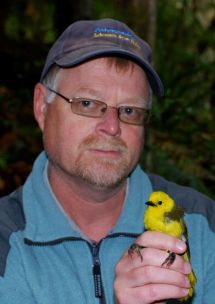
Mohua, or yellowheads, are small insect-eating forest birds. They were once widespread throughout the South Island, but now survive in just a few remnant populations in southern beech forest. They are cavity nesters and are particularly vulnerable to introduced predators such as stoats and rats.
Ian Jamieson (pictured on the left) is in the Zoology Department at the University of Otago, and his research group, which includes Masters student Lisa Hegg (pictured above), has been looking at the genetics of endangered birds such as mohua. Their goal is to provide the Department of Conservation with advice on how to maximise the genetic diversity of species, especially during translocations when small numbers of birds are moved to form a new population.
